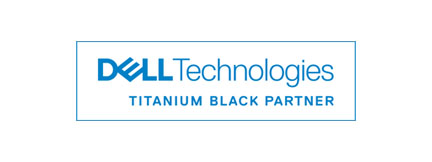
Looking for a hassle-free way to roll out new hardware?
When you upgrade to Windows 11, you can be sure you’re benefiting from an enhanced user experience and better security, but how can you be sure you’ll be able to integrate new hardware with ease?
Project Management Team Lead, Rick van den Boorn, explains how ARP can help you plan and coordinate the entire process.
Our approach is based on close collaboration between you, a solution developer and a project manager and together, we ensure your new devices are implemented without any fuss. We break down planning into three simple steps.
Before the roll out itself, an ARP consultant will help you select and purchase the perfect hardware for you and your organisation. You can also decide if you want to handle the roll out yourself, opt for some support or outsource it all.
Your ARP Project Manager will ensure to include all internal and external stakeholders in the Implementation Phase. Rick: “The team always starts with a kick-off meeting at the customer’s site, during which we define and discuss all the most important points, including stakeholder availability, where the roll out is to take place and the required services and support. This creates the basis of our project plan, and the project managers then make sure it’s stuck to.
The project plan is where the project manager defines what is going to happen and who is going to be involved. Should devices be shipped to employees’ homes? Will the rollout be centralised? What asset tags are going to be used? What information is to be saved in the CMDB (Configuration Management Database)? What images are needed? Do you want the devices to be shipped without their packaging? And so on and so forth.
With ARP, you can be sure that we’ll cover all the bases and your project manager will be happy to show you how we can take the pressure off your IT department. If you’ve chosen to completely outsource the process, you can leave coordination up to us and our planning tool, which you also have the option to purchase. This tool gives employees access to a portal where they can select hardware, which is then automatically included in the planning process. It also gives you the opportunity to select when you want to pick up your devices, register outdated hardware and plan CMDB registration, and it also provides digital receipts and loan agreements.
The final step of the Implementation Phase is to hold a pilot rollout. If you’ve decided that your staff should receive their devices at home, make sure to send a few during the pilot to make sure everything goes according to plan. If the rollout is scheduled to happen on-site, your project manager will use this opportunity to evaluate the location.
By collecting as much information as possible during the Implementation Phase, you can precisely plan who will pick up which hardware and when. If needs be, you can use the planning tool to keep track of it all. The most important thing is a distribution plan where there is very little room for error. Rick: “To avoid distribution delays, we try to eliminate as many variables as possible.”
During the rollout, those responsible for handing out the new devices have a very straightforward task. Rick: “Employees get a new device and manual, return old equipment, potentially enter a password and sign a form. Distributed devices are registered in the CMDB and maybe also in the planning tool and the employee is free to get the new device up and running.
By splitting distribution and commissioning, you ensure the whole process doesn’t go off the rails as soon as someone has a question. The project managers set up a specific area where employees can configure their devices, where floorwalkers go around answering questions and offering support. Those who are happy to read through the manual can fire their devices up themselves, whereas those who need extra help get the attention they need. Floorwalkers boost acceptance of new devices and take a weight off your IT department’s shoulders at the same time.
ARP carries out an evaluation of every completed project. Rick: “At the end of the rollout, we ask our customers to complete a survey, which we then use to evaluate the project so we can glean some learnings for next time. The fact our customers consistently carry out hardware updates every few years is testament to ARP Project Management’s proven track record. And because we manage up to 50 such projects every year, you can be sure that you’re getting the best.”
The ARP Project Management Team is with you every step of the way of your hardware rollout. Rick: “I always recommend taking advantage of our full support as this not only relieves your employees , IT department and Service Desk of some work, but also accelerates implementation. The fact that a considerable number of customers return to us speaks for itself and once you’ve experienced how smoothly everything works when you have a specialist on board, you’ll ask yourself how you ever managed without.”
Get in touch with Rick van den Boorn, Project Manager.



